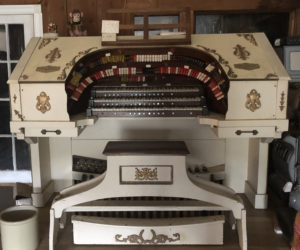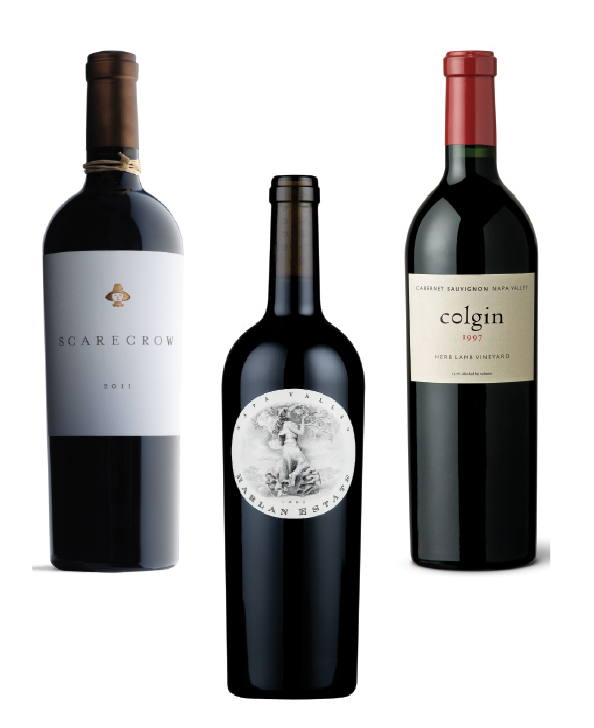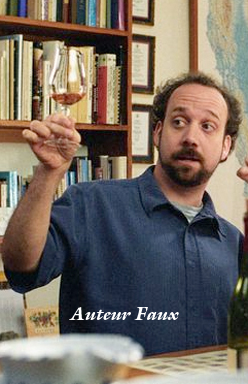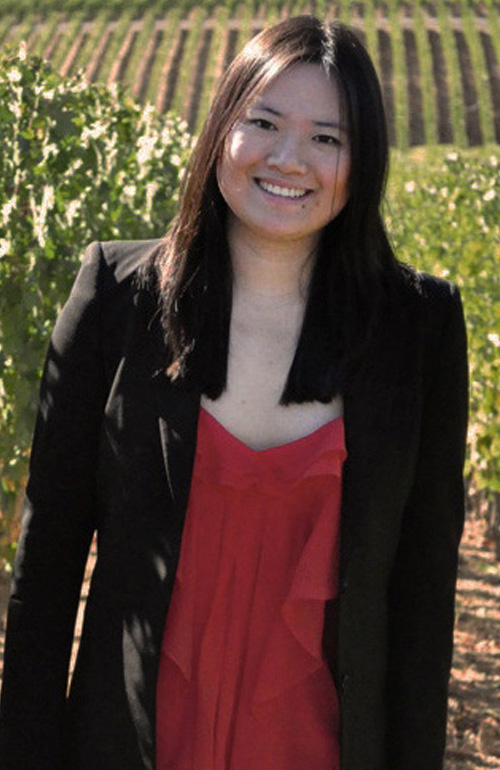To say Your West Coast Oenophile attends more than a few tastings every year would be a bit of an understatement. I have been putting together the wine program at Sostevinobile for 10 years now, and with well over 4,700 hundred labels on our roster, that would mean I would have to had visited an average 1.287 wineries every single day for the past decade. A noble endeavor, to be sure, but it has only been through the various trade events that I have been able to accumulate such a diverse list.
At these events, the general principle is to taste from white and sparkling to rosé, then onto the reds. Sweet and fortified wines, if offered, come at the end, even if they are Late Harvest Chardonnays or Sauvignon Blancs or Sémillons. But sometimes it behooves me to go in reverse order, not to seem intentionally contrarian; rather, expediency makes this necessary.
And so today, I will report my weekend discoveries from last to first, primarily because I can do anything I want on this blog. Actually, it’s kind of a misnomer to label Johnson’s Alexander Valley a discovery. The sign from the road indicated they were open, the door to the tasting room was unlocked, but no one was there. I tried to access their Website, only to get a “cannot find the server www.johnsonsavwines.com” error message from Safari. Their Facebook page last featured an entry in 2017, and Yelp reviews all cited a perplexing experience similar to my own.
A review from Sunset  Magazine, circa 2013, notes Johnson’s signature feature, an organ that plays itself whenever someone orders a bottle of their wine, a marvelously eccentric touch—if there had been anyone on hand to pour! A few ¾ full bottles rested atop the bar, alongside some wine glasses of dubious sanitary condition, so, with no one looking, I tried two of these 2010 vintages. I’ll be charitable and just say they may well have been sitting there for the past nine years.
Magazine, circa 2013, notes Johnson’s signature feature, an organ that plays itself whenever someone orders a bottle of their wine, a marvelously eccentric touch—if there had been anyone on hand to pour! A few ¾ full bottles rested atop the bar, alongside some wine glasses of dubious sanitary condition, so, with no one looking, I tried two of these 2010 vintages. I’ll be charitable and just say they may well have been sitting there for the past nine years.
Before crossing over to Sonoma County, I spent the previous three days in Napa, primarily to attend the various festivities surrounding the annual Première Napa. Having not acquired an auction paddle, I drifted randomly Saturday morning, combing the winding roads of Spring Mountain and its neighboring Diamond Mountain appellation. My ultimate destination, the secluded enclave of Checkerboard, unwittingly eluded me as I naïvely entrusted the very speculative navigation on my iPhone’s built-in Map directions. I passed by Eeden, a relatively obscure producer of Cabernet Sauvignon, Cabernet Franc, and Petite Sirah on Spring Mountain Road, but the open gate belied absence of anyone on hand to guide me through a tasting. From there, I ambled along St. Helena Highway and turned onto Diamond Mountain Road, just like Siri insisted. As I approached Kenyon Ranch Road, she instructed me to turn left, a seemingly incongruous option, as numerous signs posted at this juncture warned that the road was a dead end. Staying to the right, however, meant I would ultimately land up at Constant, unable to progress further, so I returned to the highway and manually found a more logical turnoff to Azalea Springs Way less than a mile behind me.
Siri’s inept piloting, though, proved rather fortuitous, as I stumbled upon the hitherto undiscovered Joseph Cellars about halfway to my destination. Few people outside of the wine industry realize that there are dozens, if not hundreds, of wineries throughout California that distribute exclusively to their direct-to-consumer member base; as such, they receive little fanfare and are discovered only through word-of-mouth or inadvertently, as I did.
This handsome Calistoga facility is still a work-in-progress, but produces a highly competent series of mainstream Napa wines. I was duly impressed with their 2016 Chardonnay St. Helena, a wine sourced from select nearby vineyards. Both their 2016 Zinfandel Dry Creek Valley and the proprietary 2013 Voyage, a Zinfandel/Petite Sirah blend, also sourced from Healdsburg, proved respectable. Standouts, however, came from their estate fruit, starting with the younger 2015 Estate Cabernet Sauvignon. Even more impressive was the 2011 Cabernet Sauvignon Cellar Select, a wine showing beautifully at its peak. But the wine that most made me wish it had widespread distribution was the 2013 Estate Cabernet Sauvignon, a lush expression of this pure varietal, whose full potential loomed at least 2-3 years away.
As always, I lingered far too long at the bar, chatting with the tasting room staff about everything from mutual wine connections to the new Aviatrix Grenache to insights into the Italian varietal landscape of the Temecula Valley. But I could only dally for so long before the lure of my intended discovery took hold. As an aside, it should be noted that serendipity in Napa has become far more difficult to come by in 2019, not because my forays for Sostevinobile have exhausted all that lies hidden throughout the Valley; rather, with the county is now strictly enforcing its visitation levels and requirements for by Appointment Only, along with undercover inspectors randomly visiting tasting rooms, the casual drop-in, even by members of the trade, has become a vestige of the past.
But sometimes fortuitous mistakes do happen. At the gateway to Checkerboard, I rang the call box and was invited to come on up what was nearly a two-mile driveway. Only when I arrived did the winery manager realize I was not his scheduled 2pm tasting, but my trek was not to be for naught. Inside their impressive wine cave, I was treated to a most generous sampling of the 2013 Impetuous. Winemaker Martha McClellan handcrafts this wine from Checkerboard’s three vineyard tiers, the Coyote Ridge Vineyard at 900′ elevation, the 1200′ Aurora Vineyard, and the apical Nash Creek Vineyard, towering at 2000′ above sea level. Each of these tracts also produces a single vineyard Cabernet I was not given a chance to try, but based on this blend, it will not be long before I return to complete the lineup.
Of course, this trip not lacking for tasting impressive Cabs. Over the years, I have learned to focus my energies on those Première tastings that can best augment the wine program at Sostevinobile, as well as looking to bolster the various projects I have underway with my tasting partnership with The Midway, my efforts to produce CalAsia, and the launch of Risorgimento, our new trade organization for California producers of Italian varietals. This agenda took me to First Taste Yountville, the eclectic tasting at Auberge du Soleil, the Coombsville PNV Preview Party, and the annual Bring Your Own Bottle party at Cliff Lede on Thursday, along with the 20 Case Preview reception at Freemark Abbey, Spottswoode’s Library Wines reception, Spring Mountain’s annual reception at Oddfellows Hall, the always revelatory Cherie and Phillipe Melka tasting at Brasswood, an impromptu session at Round Pond, and capping the evening off at Silverado Vineyards’ opulent House of Cab soirée.
 Still, the high point of the festivities had to have been Première on the Hill—Above the Cloudline on Pritchard Hill. I unfortunately had missed the 2018 rendition of this gathering, stilling reeling from the antibiotic regimen I had started in Lompoc, and was a bit apprehensive that this year’s session might be a replay of 2017, with its torrential rains causing Lake Hennessey to overrun and flood Sage Canyon Road along its shore. This year, with precipitation temporarily abating, the usually pellucid water turned a sinister muddy brown but remained confined below spill point. I arrived at Chappellet, my nostrils filled with wafts of burning clutch from plodding behind a torpid delivery van as it lumbered up the hill. But any lingering of this pungency was quickly dispelled by a salutatory glass of 2017 Grower Collection Chardonnay Sangiacomo Vineyard from our hosts as I entered their fabled barrel room. Once inside, I found myself amidst a veritable treasure trove of Napa’s most prestigious labels, several of which I had yearned for years just to sample. I immediately beelined for Colgin’s station, where Paul Roberts held court. He and I have been discussing my visit to the winery ever since I staged the Judgment of Piemonte on Pritchard Hill in 2016, during which time Moët Hennessy Louis Vuitton, dyslexically known as LVMH, acquired a majority stake in the winery. Still, the transition has proven anything but an impediment to the wines, which presented themselves nothing short of glorious. Even in its relative youth, the 2015 IX Estate proved a monumental blend of 62% Cabernet Sauvignon, 19% Cabernet Franc, 15% Merlot, and 4% Petit Verdot. But it was the 2007 IX Estate, with its higher concentrations of Cabernet Sauvignon and Merlot, that nearly sent me tumbling down the hill. Little wonder the French titans wanted to add this brand to their luxury portfolio!
Still, the high point of the festivities had to have been Première on the Hill—Above the Cloudline on Pritchard Hill. I unfortunately had missed the 2018 rendition of this gathering, stilling reeling from the antibiotic regimen I had started in Lompoc, and was a bit apprehensive that this year’s session might be a replay of 2017, with its torrential rains causing Lake Hennessey to overrun and flood Sage Canyon Road along its shore. This year, with precipitation temporarily abating, the usually pellucid water turned a sinister muddy brown but remained confined below spill point. I arrived at Chappellet, my nostrils filled with wafts of burning clutch from plodding behind a torpid delivery van as it lumbered up the hill. But any lingering of this pungency was quickly dispelled by a salutatory glass of 2017 Grower Collection Chardonnay Sangiacomo Vineyard from our hosts as I entered their fabled barrel room. Once inside, I found myself amidst a veritable treasure trove of Napa’s most prestigious labels, several of which I had yearned for years just to sample. I immediately beelined for Colgin’s station, where Paul Roberts held court. He and I have been discussing my visit to the winery ever since I staged the Judgment of Piemonte on Pritchard Hill in 2016, during which time Moët Hennessy Louis Vuitton, dyslexically known as LVMH, acquired a majority stake in the winery. Still, the transition has proven anything but an impediment to the wines, which presented themselves nothing short of glorious. Even in its relative youth, the 2015 IX Estate proved a monumental blend of 62% Cabernet Sauvignon, 19% Cabernet Franc, 15% Merlot, and 4% Petit Verdot. But it was the 2007 IX Estate, with its higher concentrations of Cabernet Sauvignon and Merlot, that nearly sent me tumbling down the hill. Little wonder the French titans wanted to add this brand to their luxury portfolio!
Two other labels had changed hands since my last visit. Ovid, a wonderfully eclectic winery, was sold by classics scholar Mark Nelson to the Cadillac of Napa, Silver Oak (who, in turn, had sold one of its properties to the Studebaker of Lodi, Michael David). Managing Partner Jack Bittner assured me that the wine programs here would be left autonomous and intact, welcome news to this label’s aficionados.The 2014 Ovid he poured this afternoon, a Meritage marrying 60% Cabernet Sauvignon, 35% Cabernet Franc, and 5% Merlot, proved redolent of the wondrous character that distinguishes Pritchard Hill. Meanwhile, one of Ovid’s most cherished hallmarks, the 2017 Experiment W4.7, a seeming anathema amid the overwhelming orthodoxy of Napa œnology, deftly blended Sauvignon Blanc, Grenache Blanc, Albariño, Roussanne, Picpoul Blanc, Viognier, Vermentino, and Marsanne into a pan-European white delight.
Someday I may actually meet a vintner who aspires to leave the wine realm and undertake a second career in technology. Last year, Ed and Deb Fitts sold Brand to former Apple executives Jim Bean and Christine O’Sullivan. I shudder to think what Microsoft veterans might have done to this magnificent label, but so far, the transition to the new ownership seems seamless. A preview of their 2016 Brio, a splendid rendition of a Bordeaux blend of Cabernet Sauvignon, Cabernet Franc, and Petit Verdot. More compelling—the 2016 Proprietary Blend, in which 65% Cabernet Franc stood predominant over the Cabernet Sauvignon. But the 2016 Cabernet Sauvignon, a pure expression of the varietal, proved Brand’s most compelling offering this afternoon.
The name Pritchard Hill, though now in the common vernacular, remains the domain of host winery Chappellet. Many, including myself, could offer compelling reason why it should be nomenclature for the eventual AVA everyone anticipates for this special nook, but for now their enticing 2016 Pritchard Hill Cabernet Sauvignon, a distinctive Bordeaux blend rounded out with 5% Malbec and 5% Petit Verdot, is its sole eponymous wine. Accompanying this vintage was the pre-release of their Auction lot, the 2017 Chappellet Vineyard Cabernet Sauvignon, a pure expression of the varietal from select estate blocks.
Inarguably, the predominant presence on Pritchard Hill is the Long family, with two wineries and an original stake of 1,000 acres, obtained originally in the 1960s for cattle ranching! Long esteemed for its original cult wine, David Arthur here poured its 2016 Elevation 1147, the current rendition of the 1997 wine that put them on the viticultural map. This astoundingly rich wine preceded the 2017 vintage, here in pre-release for Première, a vintage showing slightly less opulent here, with portent for greatness in another 10 years.
David Arthur had been the site of my aforementioned Judgment of Piemonte, which had featured my “ringer,” Sebastopol’s Nebbiolo maestro Emilio Castelli. Besides our Italian heritage, Emilio and I share the common bond of having been dispatched to an Eastern boarding school at a tender young age. Also part of this rarefied realm, Gandona vintner Manuel Pires. As he did at the Melka gathering, Manuel here previewed a pair of his wines, the 2016 Estate Cabernet Sauvignon and the 2016 Encosta Cabernet Sauvignon, both equally appealing.
In the age of the iPhone, I often find myself reaching into my pocket to locate the recesses of my memory. I believe I had had the occasion before to sample Nine Suns, but regardless, finding them at this event was a revelation. Here Jason Chang, another Melka client, generously poured his 2012 Nine Suns Red Wine, a modestly titled Meritage of Cabernet Sauvignon, Cabernet Franc, Merlot, Malbec, and Petit Verdot from their estate’s Houyi Vineyard.
The devastating North Coast fires in 2017 destroyed much of Atlas Peak but mostly spared Krupp Brothers’ fabled Stagecoach Vineyard, sold earlier to Gallo, which straddles Pritchard Hill. And with grapes from these plantings comprising their 2017 Synchrony Napa Valley, no hint smoke taint seemed apparent.
The acquisition of Stagecoach may have been the most startling deal of 2017, yet for those of us who dabble in winery M&A, the sale of Robert Mondavi to Constellation 15 years ago still reverberates. In its stead, Tim Mondavi and his sister Marcia, along with their legendary father, set out to build an even more extraordinary estate atop Pritchard. Continuum has become a marvel to behold, with exceptional wines to match. Its current release the 2016 Continuum, a masterful blend of 46% Cabernet Sauvignon, 31% Cabernet Franc, 18% Petit Verdot, and 5% Merlot was as marvelous as any vintage of this wine I have previously sampled, while the 2017 Estate PNV Red Wine, their exclusive Première bottling, balanced with 72% Cabernet Sauvignon, 17% Cabernet Franc, 9% Merlot, and 2% Petit Verdot.
I concluded this session with my introduction to Bryant Estate, another of Pritchard Hill’s discreet cult producers. With 80% Cabernet Sauvignon, the 2012 Bettina Proprietary Red Blend could easily have been labeled a single varietal, though perhaps in deference its indescribably wondrous 2013 Bryant Family Vineyard Cabernet Sauvignon, it kept its more modest moniker.
My friend Helen Keplinger had previously been winemaker at Bryant before moving onto Grace Family Vineyards, another cult classic that so far has eluded me. For that matter, so has Villa del Lago, Vérité, Patrimony, Sine Qua Non, and Ghost Horse’s Apparition, Spectre, and Premonition. But now Sostevinobile has made it to the top of the hill, the rest are within easy sight.




